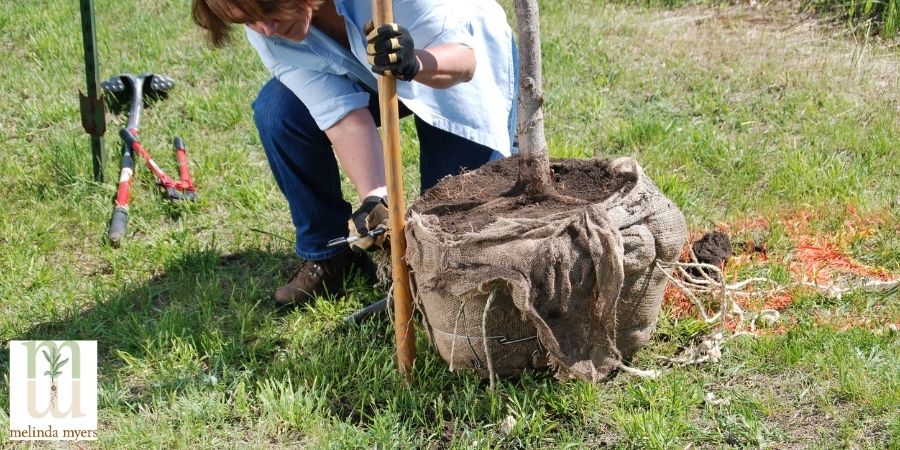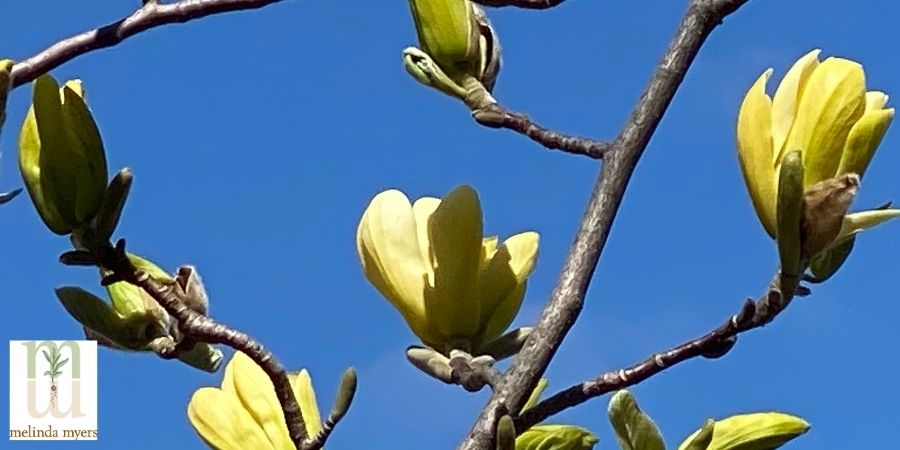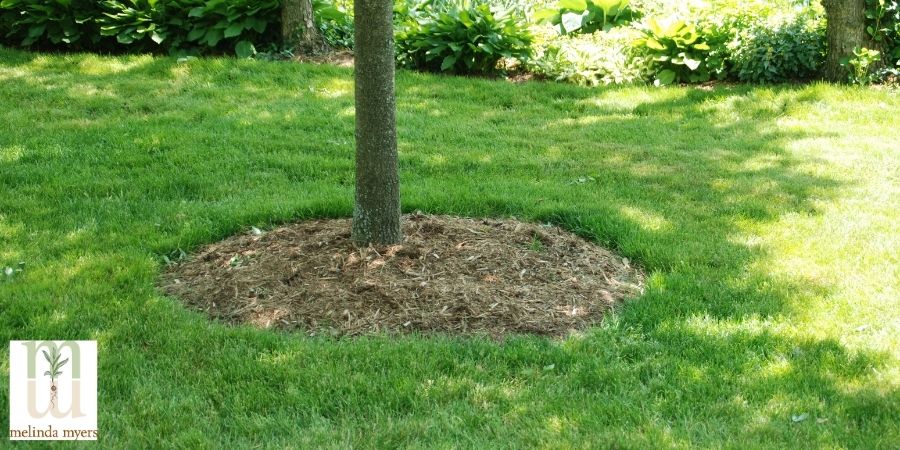Fall Planting and Care of Trees and Shrubs
- horticulturist and gardening expertOctober 3, 2020
Fall is a great time to plant trees and shrubs. The soil is warm and the air is cool making it easier for the plants to adapt to their new location. And when the weather is suitable for planting, you will be more comfortable and likely do a better job.
Consider planting conifers, those evergreens that bear cones, in late summer allowing them more time to adjust before winter. American hornbeam, ginkgo, larch, magnolia, hemlock, sweetgum, tuliptree, fruit trees, and others that are slow to establish do better when planted in spring. And this includes broadleaf e evergreen shrubs like rhododendrons and narrow-leafed evergreens like yews.
Always check for overhead utilities to avoid future conflicts when taller plants reach their full height. Check with your local utility company for their guidelines when planting anywhere near overhead utilities. In general, you should never plant a tree or large shrub that can grow within 25 feet of a power line.

And call 811 at least three days before you start planting. This free service will contact all the appropriate companies who will mark the location of their underground utilities in the designated work area. This reduces the danger and inconvenience of accidentally knocking out power, cable, or other utilities as you enhance your landscape.
Once you are ready to plant, dig a saucer-shaped hole with the deepest part being the same as or slightly less than the height of the root ball. Measure from the tree’s trunk flare (place where roots curve away from the trunk) or shrub’s crown (where roots meet stems) to the bottom of the root ball. These should be at or slightly above the soil surface once planted. Do not dig deeper which allows the soil to settle resulting in the tree or shrub being planted too deep.
Use the existing soil to backfill when planting trees and shrubs. Research has found that disrupting the soil and roughening the sides of the planting hole encourages the roots to explore the surrounding soil. Amending just the planting hole often prevents the roots from expanding into the surrounding, less desirable soil. Berms, dry wells, and growing plants that tolerate poorly drained soils can help in severely compacted soils that stay too wet for too long.

Magnolia Tree
Fall is also a good time to help all your trees and shrubs recover from the stress of summer weather and prepare for winter. Proper watering, mulching, and fertilizing when needed are key to keeping your trees healthy and providing decades of beauty.
Water new plantings thoroughly and often enough to keep the root ball and soil beyond moist. Check newly planted trees growing in well-drained soils twice a week and those in heavy clay soils once a week. Even established trees benefit from proper watering during dry periods. Water thoroughly whenever the top 4 to 6 inches of soil are crumbly and slightly moist.
Always moisten the top 12 inches of soil under and six feet beyond the canopy when watering deciduous trees, and the same depth but 3 to 5 feet beyond the dripline for evergreens. Apply 10 gallons of water for every inch diameter of the trunk. For example, a 4-inch diameter tree needs 40 gallons of water.
Use a soaker hose to place water directly on the soil and above the root zone where it is needed. You’ll spend less time dragging hoses and sprinklers and waste less water.
Mulch the soil surface around trees and shrubs to conserve moisture, reduce competition from grass, suppress weeds, and prevent weed whips and mowers from damaging the plants. This means less work for you and a better growing environment for the plants.

Create as large a mulch area under your trees and surrounding your shrubs as you can tolerate. Spread a 2 to 3-inch layer of shredded bark or woodchips over the soil surface. Pull the mulch away from the trunk and off the shrub stems. Piling mulch against the plants can lead to rot and other problems.
Fall once the plants are dormant is also a good time to fertilize trees and shrubs in need of a nutrient boost. These plants obtain most of their nutrients from fertilizer applied to surrounding lawns and gardens. But there are times we may want to lend a helping hand. When plants grow slower, have smaller or paler leaves than normal, but are otherwise healthy proper fertilization can help. If you can’t fertilize this fall, plan to give them a needed nutrient boost in early spring before growth begins.
Use a low nitrogen slow release fertilizer like Milorganite that promotes equal top and root growth. Plus, it contains organic matter that helps improve the soil and research found it also helps release some of the phosphorous and potassium bound to the soil. The phosphorous promotes root growth, flowering and fruiting and potassium increases disease resistance and hardiness.
You’ll need a different approach for trees growing in the lawn. Apply small portions of the recommended amount of fertilizer throughout the area under and six feet beyond the branch spread. Start two feet away from the trunk and every two feet along concentric circles around the tree. Use a dandelion digger or similar tool to apply the fertilizer 6 to 12 inches below the grassroots for the tree to absorb.
Tending to your trees and shrubs this fall means less work next spring. And your efforts will be rewarded for years to come.

